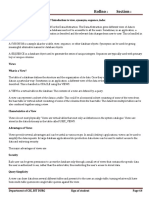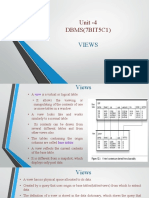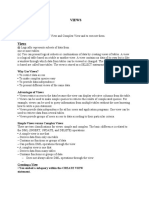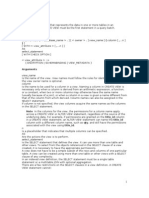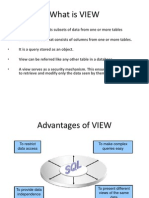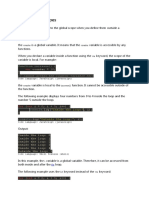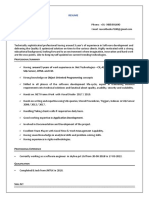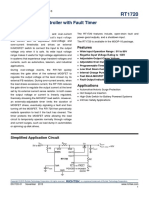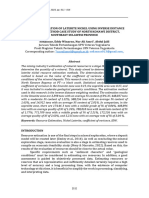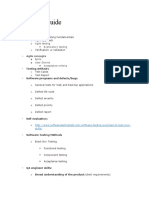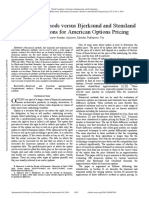0% found this document useful (0 votes)
108 views5 pagesSQL Server Views
Views in SQL Server are virtual tables that contain data from one or more underlying tables. Views do not store data themselves but act as a query layer on top of existing tables. There are two main types of views - simple or updatable views which are based on a single table and allow DML operations, and complex views which are based on multiple tables or use functions and do not allow DML operations. Views can be used to provide security, present custom data projections, and abstract the base tables in the database.
Uploaded by
sekhar sCopyright
© © All Rights Reserved
We take content rights seriously. If you suspect this is your content, claim it here.
Available Formats
Download as DOCX, PDF, TXT or read online on Scribd
0% found this document useful (0 votes)
108 views5 pagesSQL Server Views
Views in SQL Server are virtual tables that contain data from one or more underlying tables. Views do not store data themselves but act as a query layer on top of existing tables. There are two main types of views - simple or updatable views which are based on a single table and allow DML operations, and complex views which are based on multiple tables or use functions and do not allow DML operations. Views can be used to provide security, present custom data projections, and abstract the base tables in the database.
Uploaded by
sekhar sCopyright
© © All Rights Reserved
We take content rights seriously. If you suspect this is your content, claim it here.
Available Formats
Download as DOCX, PDF, TXT or read online on Scribd
/ 5



